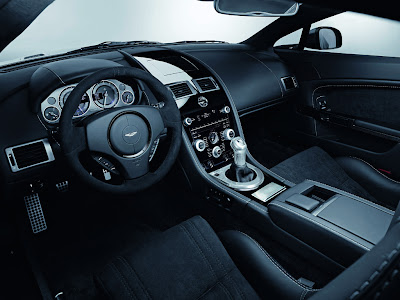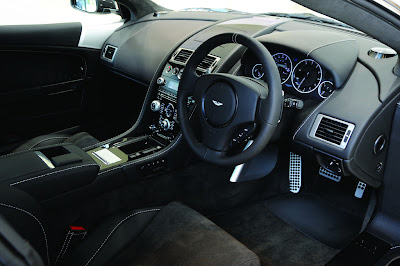2012 Aston Martin Cygnet Features

The 2010 Toyota iQ, shown here, is the basis for the 2012 Aston Martin Cygnet. Not surprisingly, the 2012 Aston Martin Cygnet will be much like the iQ in other key respects, inheriting all the nifty engineering ideas detailed in "Notable Feature" below. Of course, as an Aston, the Cygnet will cost more than an iQ--more than double, UK sources predict: Some $30,000 versus $16,500. The difference presumably reflects the Cygnet's semi-hand-built nature, as well as the premium trimmings and added standard equipment.
An Aston press release touts the Cygnet as "a distinctive, intelligent, and exclusive solution for urban travel in style and luxury." Dr. Bez says the project "will allow us to apply Aston Martin design language, craftsmanship, and brand values to a completely new segment of the market." Toyota, for its part, benefits from gilt by association with a world-famous brand, not to mention the income from selling a few more iQs. According to Tadashi Arashina, president and CEO of Toyota Motor Europe, "This collaboration represents a natural pairing of strategies: A small but spacious package, perfect for the city driver, finished off with Aston Martin's iconic design language."
In short, the 2012 Aston Martin Cygnet enables a small, high-status company to extend its market reach at a crucial time and for very little money with a well-received, high-quality product sourced from the world's biggest and most trusted automaker. A match made in marketing heaven? Perhaps. As Autocar's Steve Cropley blogged, "...the Cygnet is going to require unprecedented levels of open-mindedness of Aston Martin traditionalists. Let's hope they're up to it."
A Notable Feature of the 2012 Aston Martin Cygnet
Just as the 2012 Aston Martin Cygnet is unlike anything the British company has ever produced, the iQ marks a major break with other Toyotas. The engineering brief was to maximize space and minimize weight in a city-friendly package with a conventional front-engine and front-wheel-drive layout. Most other minicars, including putative rival Smart ForTwo, put the engine in back to drive the rear wheels. Though iQ stretches 10 inches longer than the Smart, Toyota touts several space-saving innovations, starting with a smaller front differential that allows optimal powertrain positioning in concert with a new "center-point" steering gear. A compact flat fuel tank tucks safely beneath the rear floor. The heating and air conditioning components were also redesigned to be less intrusive without compromising function. That, in turn, led to a slim-line dashboard and console that sweep away so front occupants can sit further forward without being cramped. Doing so leaves room behind for an average-size adult on the passenger side and for a child-size "jump" seat on the driver's side. Unique slim-line front seatbacks and heavy use of electronic components also conserve space in the "3+1" cabin.
Despite a modest base curb weight of just 1,940 pounds, the iQ gets top 5-star ratings in Euro NCAP crash tests, which are much like U.S. standards. The Cygnet should do just as well, as it retains the iQ's architecture and safety features that include front- and curtain-side airbags. An electronic stability system with traction control will be standard too.
Toyota is no less proud of the iQ's ultra-low CO2 emissions of just 99 grams per kilometer with the base 1.0-liter 3-cylinder engine and 113 g per km with the 4-cylinder 1.3 that's expected in the Cygnet. Incidentally, that engine includes a stop-and-start feature that contributes to excellent iQ fuel economy of nearly 59 mpg on the European combined cycle. The Cygnet probably won't match that, as it's bound to gain weight with Aston's added content. Still, this should be one thrifty little luxury car.










